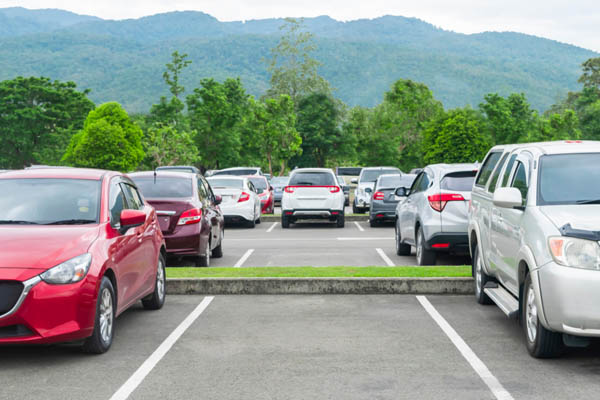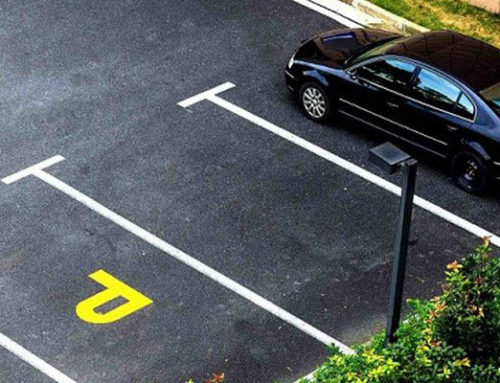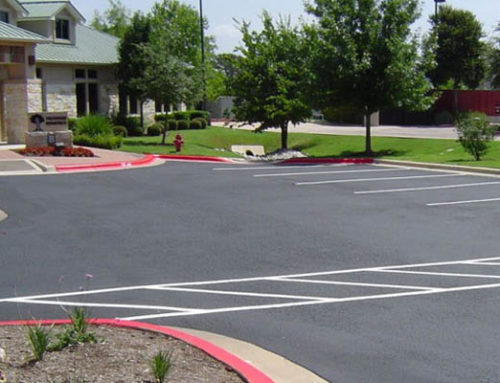As managers of residential properties, we want to provide every home-type comfort for our residents that we possibly can. One of those comforts is parking for residents. We must give our residents a place to park… But what about their guests?
While there are some properties that have absolutely no guest parking, very few people prefer to live in a place where they would never be allowed to have someone over. We all want to be able to open up our homes to others for gatherings, visits and special occasions.
All through Houston you can pretty much always find a place to park and its not a city where you can easily live without a car. Because of this, we Houstonians have come to view parking as a basic right and not a privilege or luxury item (as in other cities). It’s mostly free wherever you go and, therefore, its often taken for granted.
As a manager of a property, however, you know that parking is not free at all.
In a study put out by the Victoria Transport Policy Institute, they lay out the hard costs of providing parking. While Houston is certainly not the most expensive city to build a parking lot in, its not cheap either. The study, published in November of 2018, shows that parking costs $16,581 to build per space. PER SPACE!
And that’s just to build it. That doesn’t include any maintenance of those red curbs, any pot holes that show up or even the stripes themselves. When I quote this figure to people, they think it’s unreal, but most people don’t think about parking in its entirety. You’re not just providing the space by itself. You must provide the driveway, the entries, the exits, the access ramps, etc. The amount of space that a car occupies once parked is very small, but the amount of space you have to provide to get the car into that space is quite large. And expensive.
So how much of that huge investment should be for residents and how much should be for visitors?
The simplified answer to that question is: 5-8%. This is an industry norm and, for almost all properties, its more than enough. It may not be the amount your residents think is ideal, but here’s why it works.
Let’s say you are the manager of Apple Ridge Apartments. It’s a pretty average size place with 350 units and 450 parking spaces. This is typical and represents a ratio of just under 1.3 spaces per unit. Nine of those spaces are going to be set aside for handicap parking (the 2% rule). So now you have 441 spaces that you need to allocate.
8% of 441 is 35. If you dedicate those 35 spaces to visitors, you have 406 spaces left that can be dedicated to residents.
According to the HAA Industry Breakfast (see page 4), average occupancy is hovering around 90% right now. 90% of your 350 units is 315. Take that 315 and divide it into your 406 available spaces and your parking ratio stays steady at about 1.3 – the number you had at the start. It’s still not ever enough, but its about as good as it gets in Houston. If you’re at 90% occupancy, capping visitor at no more than 8% is crucial.
The problems really start if you don’t have that 1.3 ratio in the first place or if your occupancy gets above 90% (and we all want our occupancy above 90%!!!).
If you’re 97% occupied (good job!) and have 8 percent of your parking dedicated to visitors, you now have just 1.19 spaces per unit. That means only 20% of your units could have an additional car.
If you’re dedicating even just 2% more to visitors (for a total of 10% visitor parking), you are now down to 1.16. Only about 50 out of your now 340 occupied units could have an additional car.
Is that even realistic?
No. And it’s not fair to your good, paying residents either.
While it seems harsh to do, you have to cap visitor parking. Your visitors (or unauthorized occupants or girlfriends sleeping over 6 nights a week…) are not the ones paying the rent.
Your leaseholders are paying and it’s important to prioritize them and their vehicles first. They don’t own the place (although they think they do), but they should have first right to the amenities – and that includes parking.
This is also the reason you can’t let John over in unit 106 keep storing that wrecked vehicle on property. It’s not that you don’t like John. It’s just that those parking spaces are waaaay to valuable and in demand to waste on a car that isn’t being used (and isn’t on the lease). Allowing two cars per person just isn’t possible on most properties.
If you typically have very high occupancy (Yay!) or you’re starting off with a ratio of 1.2 or lower, you need to keep visitor closer to 5% or even eliminate it during nighttime hours.
One argument I often hear is that residents can park in visitor so it’s not really taking a space away from them. Oh, but it is.
If you have a resident that works 3-11pm and gets home around midnight, all those visitors and all those abandoned cars that never move are already in those visitor spaces. And by that time the resident ones are full too. If you’re saying it’s a visitor space, then don’t count it as a resident space because there is zero guarantee a resident will be able to utilize it.
If you have 10, 20 or 30% (yes, I often see 30%!) visitor parking, you will find your parking is full even at 80% occupancy. Hoping to get up to 95% and have people remain happy with the parking situation is just impossible.
If you need help counting up your spaces and figuring out a good parking plan, do call us! We can come up with a solid program that encompasses all your goals – resident satisfaction, occupancy, visitors, etc. Call us today. We are here to help!






Leave A Comment